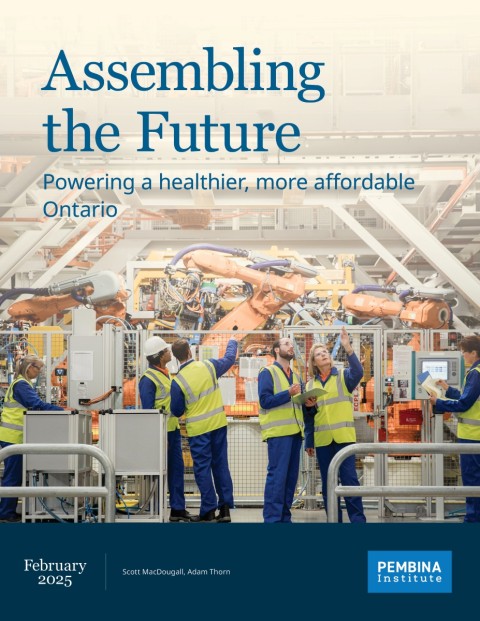Today, Ontario, along with all other governments across Canada, faces a new economic reality. The threat of a significant and prolonged trade dispute with the United States is creating justifiable unease about Canada’s future and the impact on all Canadians, including on their livelihoods and quality of life.
Regardless of the extent to which tariffs are ultimately imposed, it is clear that a period of major economic realignment has begun. In recent weeks all Canadian governments have acknowledged the need to fundamentally re-evaluate how economic stability and prosperity is created in this country. We must find a new path — one that is not overly reliant on the U.S. and that ensures a strong, resilient Canadian economy better insulated against future external shocks.
In Ontario, the current situation is compounding already acute concerns around the cost of living, healthcare and housing affordability, top ballot box issues among voters over the last few years. The next provincial government must therefore ensure not only that Ontarians are protected from the immediate impact of tariffs or other near-term threats, but also that the province’s economy is set up to thrive long into the future.
To do this amid all the present noise, Ontario’s future leaders will need to pay close attention to the emerging longer-term trends on clean energy development, not just in North America, but across the world. As the International Energy Agency reported late last year, there is now an abundance of economic opportunities tied to the energy transition and “cost drivers, as well as intense competition for leadership in clean energy sectors that are major sources of innovation, economic growth and employment” are among the forces driving a continued rise in clean energy production and use, globally. In this context, the energy transition is better understood as an industrial revolution, where those who provide access to abundant clean energy to power new industries and promote the uptake of clean technologies will reap the economic and social benefits.
The takeaway for Ontario is clear: developing a clean energy economy has the potential to make Ontarians’ lives more affordable, their homes and cities healthier and more comfortable, and create new sectors and jobs. This demands consistent and forward-thinking decisions.
Ontario has already understood that rapidly expanding the amount of low-cost, low-emissions electricity on its grid is the pathway to attracting meaningful investment in the new energy economy, while also reducing costs for families. But it cannot afford missteps such as expanding the use of natural gas on its grid to a level that will hurt its future clean energy competitiveness or failing to introduce policies that ensure more Ontarians can experience the benefits of electric vehicles (EVs), which are cheaper to run and reduce air pollution in communities.
Ontario must work rapidly to address these risks to its progress. If it does, the province and its people will be well-placed to not simply survive the energy transition but thrive within it. With a predominantly non-emitting electricity grid; world-class colleges and universities; ready access to global markets and international capital via Bay Street; a skilled and large workforce; sustainable natural resources; and a growing cleantech sector supporting emerging industries like data centres and EV supply chains, Ontario has all the requisite components for success in a low-carbon world. Its leaders must now make active decisions to put all those parts together and assemble a prosperous future.











